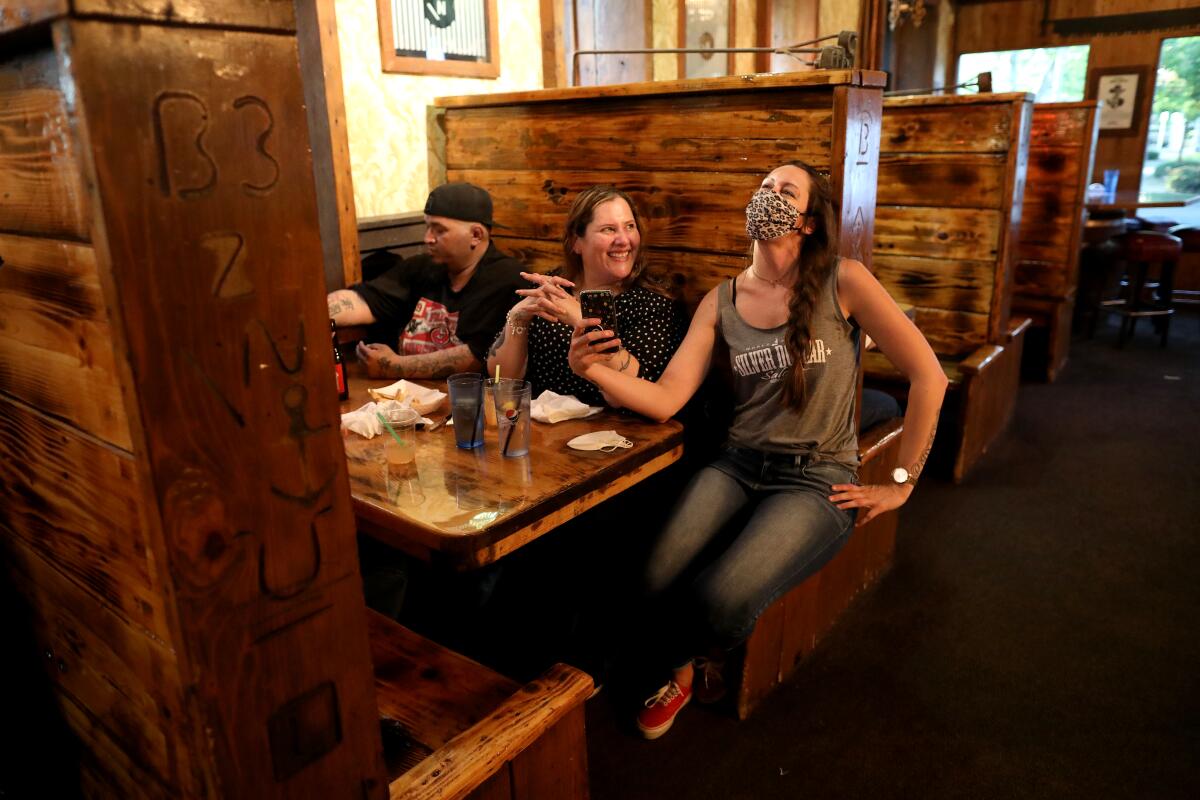Lifting stay-at-home order too soon would cause more deaths, Northern California officials say

- Share via
SAN FRANCISCO — Santa Clara County’s executive officer cautioned Tuesday against moving quickly to lift the shelter-in-place order.
The death toll in California is still going up at significant numbers, Dr. Jeffrey Smith told the Santa Clara County Board of Supervisors. A Times analysis showed that 495 coronavirus deaths were reported statewide in the seven-day period that ended Sunday. While the weekly death toll represented a 9% decrease compared to the previous week, it also represented nearly one-quarter of the state’s death toll up to that point.
“You can still see that it’s still gone up pretty significantly in recent times,” Smith said. “There’s a lot of talk in California about relaxing shelter-in-place [orders]. I just want to point out that we’re still, in California, going up dramatically. So there’s no clinical evidence that shelter-in-place [orders] should be relaxed at this point.”
Echoing statements by other medical experts, Smith said loosening the stay-at-home orders would result in more infections and deaths.
With many states now significantly relaxing stay-at-home orders, Smith noted the University of Washington’s Institute for Health Metrics and Evaluation was now forecasting a national death toll of more than 134,000 by early August, close to double the current total of 70,000. The institute now forecasts a California death toll of 4,700 by early August, also roughly double California’s current number of more than 2,300.
Dr. George Rutherford, a UC San Francisco infectious disease expert, said on KGO-TV that the institute’s estimates so far had been spot-on.
Separately, a private projection by the Trump administration forecasts the daily death toll nationwide to rise to about 3,000 a day on June 1, the New York Times reported. The average daily death toll nationally last week was 1,800 fatalities a day.
Such a daily death toll would be staggering, Rutherford said. “Just remember, 3,000 deaths per day is 90,000 deaths per month. There were 56,000 Americans who died in Vietnam; 44,000 that died in the Korean War, and that was spread out over years,” he said.
“Relaxing shelter-in-place will cause new people to die,” Smith said. “Relaxation that’s more rapid and more widespread will be more risky.”
So far, Santa Clara County has joined five other Bay Area counties in implementing one of the nation’s strictest shelter-in-place orders, and the county has opted for an extremely slow loosening of its rules. For example, although construction in L.A. County was never ordered halted, the Bay Area put the brakes on most construction. That restriction was repealed just Monday in a new health order. The Bay Area’s stay-at-home order has been extended to May 31.
Sign up for Essential California
The most important California stories and recommendations in your inbox every morning.
You may occasionally receive promotional content from the Los Angeles Times.
Dr. Sara Cody, the Santa Clara County health officer, said the Bay Area’s most populous county is seeing cases and hospitalizations flatten or decrease, and has ample hospital bed capacity. But the county still does not have an adequate supply of personal protective equipment, including masks, gowns and gloves, only one-fifth of the needed testing capacity, and needs to do more to increase the county’s capability to investigate new illnesses.
When asked if the governor’s announcement about the statewide loosening of stay-at-home orders would affect the Bay Area, Cody said health officials were still seeking more specifics from the state as to what was allowed to be opened.
One elected official, Santa Clara County supervisor Mike Wasserman, expressed concern about the potential duration of the shelter-in-place order and said he hoped all small businesses — from barber shops to jewelry stores — could be allowed to reopen as soon as possible.
“We can’t shelter in place forever,” Wasserman told health officials. “We do know if we don’t let more people go back to work sooner than later, our economy will effectively go on life support.”
County officials asked for more patience, saying increased testing and disease investigating capabilities were crucial before lifting stay-at-home orders further.
“We’re working really hard,” Cody said, “because we do know that many, many in our community are suffering from the economy and the social isolation of being at home. So I hear you loud and clear. And I am worried, too.”
Smith added that sticking with the shelter-in-place order longer the first time might end up being the better move, not only from a health perspective, but also from an economic one.
During the 1918 Spanish flu pandemic, while Philadelphia moved too slowly to deal with rising flu outbreaks, St. Louis acted far more quickly, closing many public places swiftly, and, “strangely enough, their economy came back faster than Philadelphia’s,” Smith said.
A recent study found that cities that moved more aggressively to close down the city as the flu hit experienced a better economic recovery afterward. “It’s never an either-or,” Smith said, “it’s always how do you accomplish both good goals. And we’ve got two good goals.”
Smith said this pandemic was one of only four worldwide in the last 102 years and the only one in modern history caused by a coronavirus, a type of virus that until now has been associated with the common cold.
In just a matter of a few months, 256,000 people who have been infected with the coronavirus have died, while the 1957-58 flu pandemic killed 1.1 million people, the 1968 flu pandemic resulted in 1 million deaths, and the 1918 pandemic resulted in 50 million dead worldwide.
More to Read
Sign up for Essential California
The most important California stories and recommendations in your inbox every morning.
You may occasionally receive promotional content from the Los Angeles Times.











